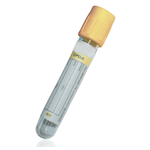Suitable Specimen Types
- Serum
- EDTA Plasma
- Li Hep Plasma
Sample Processing in Laboratory
Usual
Sample Preparation
Centrifuge
Turnaround Time
< 1 day Mon-FriSample Stability
Usual
Chloride
General Information
Chloride is the major extracellular anion. Together, sodium and chloride represent the majority of the osmotically active constituents of plasma. Concentrations of chloride will generally follow those of sodium. However, determination of plasma chloride is useful is the differential diagnosis of acid-base disturbances and essential for calculating the anion gap. Fluctuations of chloride concentrations have little clinical significance but do serve as signs of an underlying disturbance in fluid and acid-base homeostasis.
In general, the causes of hypochloraemia will parallel those of hyponatraemia. It is frequently seen in metabolic acidosis due to increased production or reduced excretion of organic acids (e.g. DKA or CKD). Persistent gastric secretion and prolonged vomiting, whatever the cause, will result in a significant loss of chloride and ultimately in a hypochloraemic alkalosis.
Increased plasma chloride concentration, like an increased sodium concentration, will occur with dehydration, renal tubular acidosis, AKI, overtreatment with saline, DI and metabolic acidosis associated with prolonged diarrhoea and loss of sodium bicarbonate. A slight rise in chloride may also be seen in respiratory alkalosis.
Patient Preparation
None
Notes
Contact the laboratory if request is urgent.
Reference Range
95-108 mmol/L
(Source : Pathology Harmony Recommendations)
(Urine 110-250mmol/24hr collection, Abbott Diagnostics)
Specifications
-
EQA Status:
NEQAS and WEQAS
